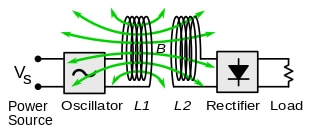Hello everyone
I want to make a little project so I can wirelessly (just a few centimeters) power an LED strip (just a short section) using a transmitter and reciever coil.
I have a 6V 4Ah lead acid battery. I want to use this as the input. I want to convert this to an AC signal around 100kHz and connect the transmitter coil to it.
On the other side I will have the reciever coil that goed to a rectifier and then to the LED strip (5V 1.9W).
What is the best (and most simple) way to do this? I was thinking about using a Colpitts Oscillator. Can this work?
Also is the battery ok or should I just start with a 12V voltage from a bench psu to make my life easier?


